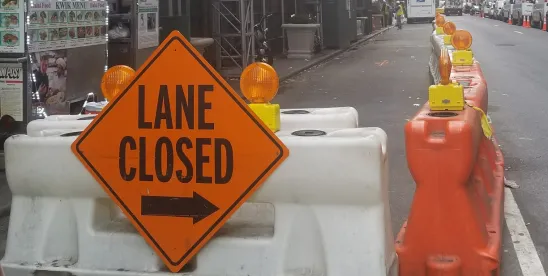An easement is a right to make some specific use of land owned by another.
Because easements involve the easement owner using land owned by someone else and because it is human nature to value and protect property, it is common for disputes to arise regarding easement rights. This article addresses some of the basics about easements, the types of disputes that can arise regarding easements, and some practical considerations when navigating easement disputes in North Carolina.
Types of Easements
There are two general types of easements: (1) appurtenant easements and (2) in gross easements. Appurtenant easements benefit a particular piece of property. An example of an appurtenant easement is an access easement whereby the owner of property A has a right to cross over property B to access property A. In this example, the property that benefits from the easement (property A) is known as the dominant estate, and the property burdened by the access easement (property B) is known as the servient estate. Appurtenant easements attach to and pass with ownership of the land that benefits from the easement. In this example, the easement right to cross property B to access property A is a right that flows from ownership of property A and automatically passes to any new owner of property A.
In gross easements, on the other hand, consist of a personal or company right to use the land of another that is unrelated to the easement holder's ownership of neighboring land. An example of an in gross easement is a utility easement, whereby a utility company has the right to install and maintain underground or above-ground utility lines.
Generally, easements must be created in writing. The most common way to create an easement is by an express written grant that describes the scope and location of the easement and is recorded with the register of deeds in the county where the properties impacted by the easement are located. Oftentimes, express easements are referred to in the deeds conveying the property benefitted or burdened by the easement and can be found in the chain of title to the property.
In a few limited fact-dependent scenarios, easements can be created in the absence of an express written grant, including easements created by necessity, by implication, by estoppel, and by adverse possession/prescription. Courts, however, are hesitant to impose easements that limit the use of the servient estate in the absence of an express written grant of easement. So, there must be a strong basis for these other types of easements. This article focuses primarily on express easements. For more information on implied easements, easements by estoppel, and prescriptive easements obtained through adverse possession, please see my colleague's article here.
Common Easement Disputes
By our nature, humans (and corporate entities operated by humans) are fiercely protective of the land that we own. So, it should come as no surprise that disputes commonly arise regarding easements and the rights of the easement owner to use land owned by another. Common easement disputes include:
- Whether any easement right exists at all
- Whether an express easement sufficiently describes the location of the easement and, if so, where the easement is actually located on the ground
- The scope of the easement, including how the easement owner can use the land subject to the easement and any limitations on such right
- Whether an easement is being misused or overburdened by the easement owner, thereby causing damage to the servient estate or interfering with the servient estate owner's property right
- Whether a servient landowner is obstructing or interfering with the easement owner's easement right
- Who is responsible for the labor or costs associated with maintenance of the at-issue easement.
Resolving Easement Disputes: Ground Rules and Principles
If you are involved in an easement dispute, the first and primary order of business is to ensure you understand the scope and nature of the easement. This will involve an assessment of the language of the written document that conveys the easement rights. Easement descriptions are often drafted by lawyers and can be difficult to understand. They may refer to or rely on other recorded documents such as survey maps or deeds, and they commonly refer to the location of the easement by reference to property coordinates that can be difficult to make sense of. So, if you find yourself involved in an easement dispute, it is best to consult with an attorney.
When assessing an easement dispute, there are a few default ground rules and easement principles to keep in mind. First, an easement owner's use of his easement is limited to the rights expressly listed in the easement grant. An easement owner can be subject to liability if he misuses or overburdens the easement. Misuse occurs when the easement owner uses the servient estate in a way not intended or contemplated by the deed of easement. For example, if an easement grants only an access right but the easement owner places utilities under the access road, then the placement of utilities would constitute a misuse of the easement. Another common example of misuse occurs when the easement is granted strictly for residential use, and then the easement owner (dominant estate) converts its property to commercial use. Overburdening occurs when the easement owner expands the physical boundaries of the easement beyond what is provided in the deed of easement. For example, if the easement specifically grants a ten-foot-wide easement and the easement owner expands the easement to twenty feet, this will constitute overburdening of the servient estate.
Second, while an easement owner has a limited right to use the servient landowner's land for the purposes stated in the grant of easement, the servient landowner maintains the right to use the part of his land burdened by the easement for any purpose that does not unreasonably interfere with the easement owner's easement rights. Only where the actions of the servient owner result in increased cost or inconvenience to the easement owner or create a safety hazard for the easement owner in his exercise of his easement rights do such actions rise to the level of an unreasonable interference. The clearest example of an unreasonable interference with easement rights would be if the servient owner built a fence that completely blocked the easement owner from accessing and using the easement. But generally, whether a servient owner is interfering with an easement and whether a dominant landowner is entitled to make the servient owner cease the interfering activities is a fact-dependent inquiry.
Easement Maintenance and Repair
Lastly, on the issue of easement maintenance and repair, in the absence of an agreement to the contrary, the general rule is that the owner of the easement (the dominant estate) is responsible for the costs of maintenance and repairs to the easement where the easement exists and is used solely for the benefit of the easement owner. If the servient landowner also uses and benefits from the easement, however, then they likely have an obligation to share in the costs to maintain and repair the easement. And if multiple people use and benefit from the easement (such as a private road access easement for the benefit of the homeowners in a neighborhood), then the cost of maintenance is typically shared by everyone who uses the easement on a pro rata basis.
In summary, easements are valuable property rights that come in many different shapes and sizes. There is a natural tension between the easement owner's rights and the servient landowner's rights, and disputes involving easements are common. Easement disputes are highly fact-dependent and are primarily governed by the language of the easement agreement and the rights and limitations that it provides. Because easement disputes involve nuanced issues of real property law, it is best to consult with an attorney when navigating an easement dispute to ensure you fully understand your easement rights and limitations and can leverage your rights to achieve the best possible outcome.





 />i
/>i

